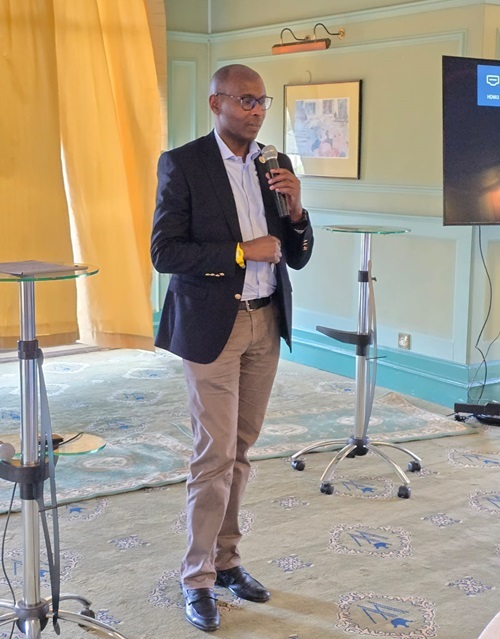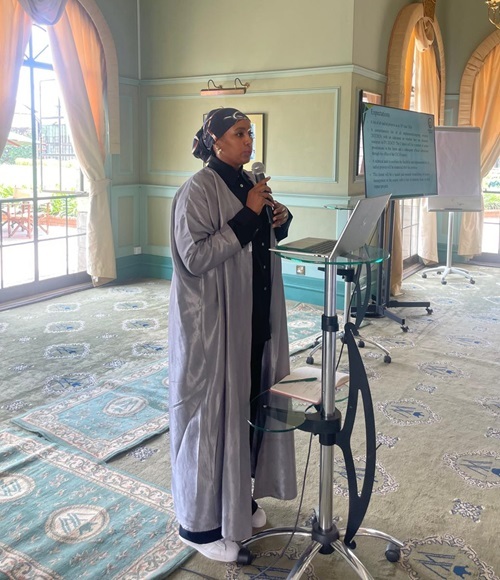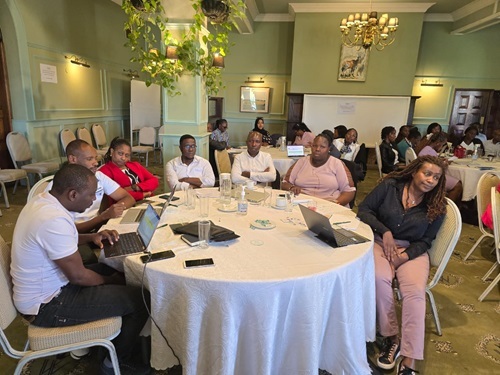Nairobi, 14th September 2024
Nairobi County Treasury, led by the County Executive for Finance and Economic Planning Sector, Charles Kerich, held a two-day working session with county sectors on projects conceptualization, implementation and operationalization.
The session aimed to ensure continuity in the implementation of ongoing projects and proper scheduling of new ones. The key objective was to ensure that project implementation is matched to cash flows.
Mr. Kerich emphasized the importance of aligning budget planning, implementation, and execution over a three-year period. “The purpose of the meeting is to link planning with implementation. We are reviewing what is pending, stalled, or set to be jump-started in FY 2024/2025 while also planning for FY 2025/2026. We have a draft Annual Development Plan (ADP) in place, which outlines what we aim to achieve in the coming year.”
 He further added that during the ADP, County Treasury collected views and projects from sectors and put together the ADP, a time bound document. “When we went through the document, it was clear that some sectors had not put a lot of thought into what they wanted to do. We submitted the ADP to the County Assembly, and they will then have sectoral meetings to engage with the sectors, and this gives you an opportunity to relook at the projects you have listed in the ADP. ”
He further added that during the ADP, County Treasury collected views and projects from sectors and put together the ADP, a time bound document. “When we went through the document, it was clear that some sectors had not put a lot of thought into what they wanted to do. We submitted the ADP to the County Assembly, and they will then have sectoral meetings to engage with the sectors, and this gives you an opportunity to relook at the projects you have listed in the ADP. ”
He highlighted the need for sectors to focus on completing ongoing projects rather than launching new ones. “There has been active participation in planning and budgeting, and I would like to see the same spirit in auditing and revenue mobilization.”
 County Officer for Finance, Asha Abdi, raised concerns about the county’s unrealistic budget. The county has been operating with a KES 42 billion budget, which heavily relies on Own Source Revenue (OSR) collection and equitable shares from the National Government. However, OSR performance has consistently fallen short, with underperformance ranging between 50% and 60%.
County Officer for Finance, Asha Abdi, raised concerns about the county’s unrealistic budget. The county has been operating with a KES 42 billion budget, which heavily relies on Own Source Revenue (OSR) collection and equitable shares from the National Government. However, OSR performance has consistently fallen short, with underperformance ranging between 50% and 60%.
Ms. Abdi stated, “We cannot continue working with KES 42 billion budget given the risks of reduced equitable shares and persistent unrealistic targets. Last year, we spent on KES 42 billion budget without proper control over cash flow, resulting in a significant portion of the budget being voided, which then became part of our growing pending bills.”
She urged sectors to work with more realistic budgets and focus on completing ongoing projects from 2022/2023 rather than procuring new ones. “Do not draft lists based solely on the ceilings provided by the County Assembly. Use facts and data from your sectors to generate realistic project lists. The discussions from this working session serve as a precursor to the county’s first supplementary budget of the financial year.
County Chief Officer for Economic Planning Affairs, John Lintari emphasized the importance of setting realistic and achievable goals, particularly in the context of inherited projects from previous administrations. “This meeting is essentially a recall of our execution framework for the coming year,” he stated.
He highlighted the need for accountability and the imperative to prioritize projects with the highest deliverables. He also acknowledged the existing gap between budgetary demands and available cash inflow, aligning with H.E Governor Sakaja’s focus on sustainable finance and increased revenue sources.
 The Sectors delivered detailed presentations on their progress, budgetary requirements, and key priorities for the upcoming financial year. They articulated their expectations and highlighted the critical projects they intend to focus on.
The Sectors delivered detailed presentations on their progress, budgetary requirements, and key priorities for the upcoming financial year. They articulated their expectations and highlighted the critical projects they intend to focus on.
Going forward, expenditure management and control shall guide the fiscal management dictates, in line with the public financial management act whilst aiming to achieve H.E Governor Sakajas’ manifesto.
The session was attended by County Executives from all sectors, alongside their respective County Chief Officers, Heads of Departments, and County Officers.
End/…

